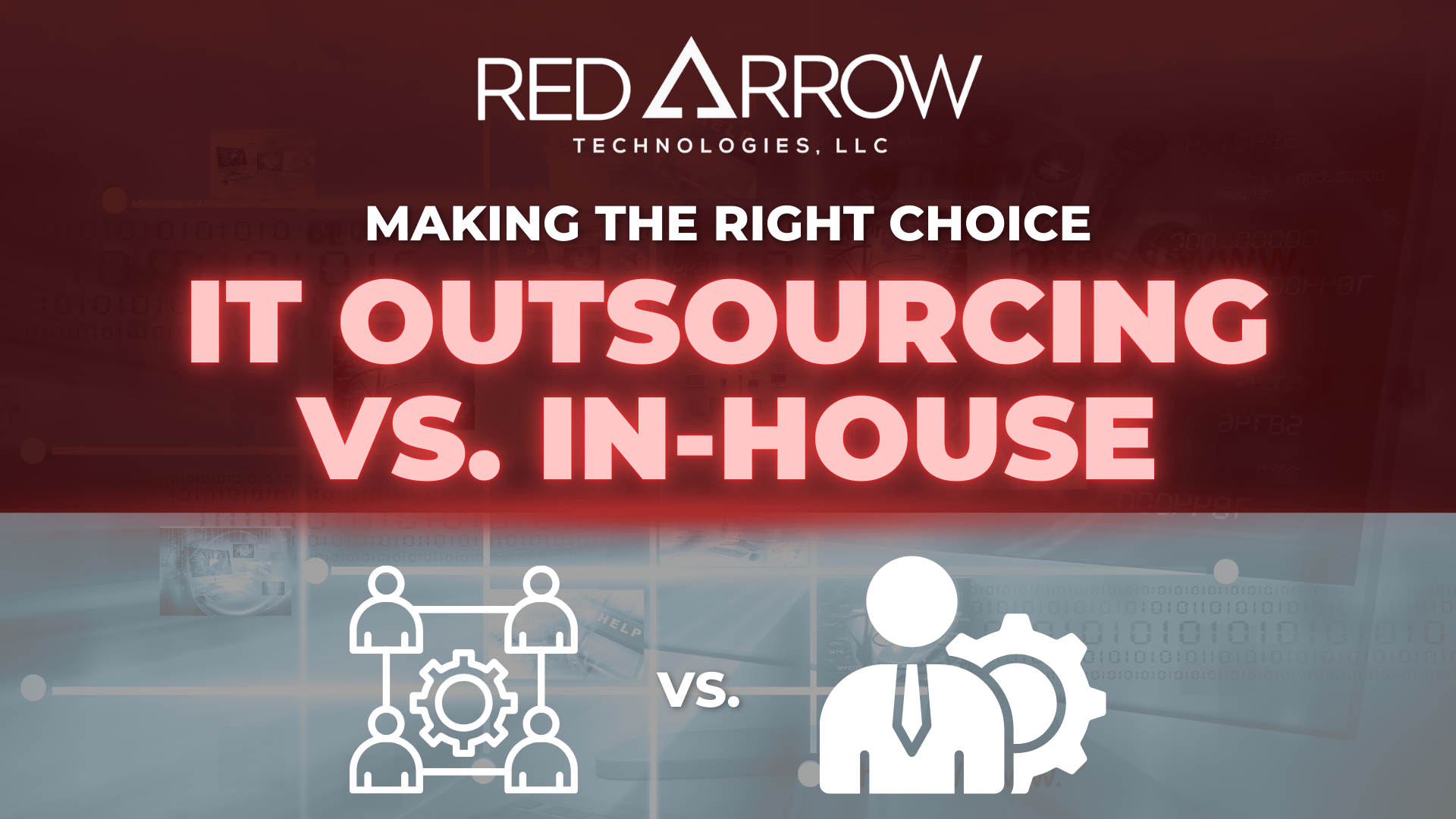You’ve probably felt it before: your systems aren’t working right, but you can’t quite grasp what it is. The server might crash too often, or your team is always fixing printer problems instead of working on client projects. The criminal? It might not be the hardware but how you handle IT support.
Things get tougher as your business grows. Is it time to consider the benefits of outsourcing that everyone is talking about, or do you hire more IT staff?
Understanding the Two Models
An in-house IT team comprises full-time employees who work for your company. As an on-site (or hybrid) worker, they have a thorough understanding of all your processes and are often deeply embedded in the operations of your business.
On the other hand, IT outsourcing is when you hire a third-party firm, like a Managed Services Provider (MSP), to take care of some or all your IT needs. This could include helpdesk support, network control, security, moving to the cloud, and more.
There isn’t a single correct answer here. If you’re unsure which way to go, taking a closer look at the pros and cons of outsourcing IT services vs. keeping them in-house can help you decide.
The Case for In-House IT: Familiarity, Culture, and Control
Walking down the hall and seeing your IT manager at their desk makes you feel safer. Some businesses have trouble with in-house IT because they do not have enough control or proximity. This is especially true when they deal with private data, old systems, or complex, custom infrastructure.
Here’s where in-house shines:
- On-site familiarity: Your team knows your workflows, quirks, and people—no learning curve.
- Cultural integration: IT becomes part of strategic planning, not just tech support.
- Security control: Some finance, healthcare, and legal businesses prefer to keep all sensitive data handled internally.
But what’s the compromise? Cost.
The cost of hiring an IT specialist in the U.S. is between $100,000 and $140,000 per year, not including benefits, training, or the tools they need. Need help 24/7? Costs may increase even more if you hire more people or staff for night jobs.
What happens if they leave? Since no one supervised your devices during the break, you’re left on your own.
The Case for Outsourced IT: Cost, Expertise, and Scalability
Let’s now discuss the benefits of IT outsourcing.
There are more benefits than just saving money. Network engineers, safety experts, and Microsoft 365 administrators are just a few of the experts you can get help from. You do not have to hire each one separately.
- Scalability: Add or reduce services as your business grows or pivots.
- Expert access: Outsourced providers bring targeted expertise that would be expensive to hire in-house.
- 24/7 support: Most MSPs offer round-the-clock monitoring and helpdesk services.
- Cost control: Predictable monthly fees make budgeting easier for small and medium-sized businesses (SMBs).
There’s also evidence to support it. A 2022 Deloitte study says that 33% of businesses say that cutting costs is the main reason they outsource IT, while 56% say that getting access to new features is the main reason.
Don’t forget about safety. Small businesses can’t afford to have weak defenses when threats like ransomware and hacking are rising. Most MSPs have enterprise-level security systems that are more advanced than most internal teams can set up independently.
Cost Analysis: Let’s Talk Numbers
You wouldn’t be here if capital weren’t an issue.
Oracle says that any business spends 12% of its revenue on IT. That’s $150,000 to $300,000 annually for a company that makes $5 million.
Most of that budget could be used to hire two full-time IT experts, and that doesn’t even include software licenses, security tools, or changes to the infrastructure.
On the other hand, outsourcing to an MSP might range from $1,230 per employee annually, depending on your requirements and the complexity of your environment. That’s $30,000 to $120,000 annually; support and tools usually go much further.
After cost analysis for uptime, reaction times, and risk reduction, outsourcing frequently offers better value per dollar.
The Middle Ground: Hybrid IT Models
Naturally, you don’t have to choose between these two options.
When deciding between in-house and outsourced IT support, a few businesses refrain from choosing a side. Instead, they combine the two. Your in-house team can work on big projects with a hybrid IT approach, while the MSP takes care of boring tasks like backups, support, and security monitoring.
It’s the best of both worlds:
- In-house: long-term planning, system architecture, and staff training.
- Outsourced: helpdesk, patching, cloud backups, and compliance.
This approach benefits small businesses that need to stay flexible while building a strong tech foundation.
Final Verdict: It’s Not Just About IT
There are more decisions than just managing networks and answering tickets. You decide how your business will run, succeed, and expand.
For some, having control and integration over an in-house IT team is worth the investment. For others, the benefits of IT outsourcing, such as cost savings, access to knowledge, and 24-hour support, far exceed the hazards.
Another option is the hybrid method, which is quick, adaptable, and becoming more popular among medium-sized companies that need speed and insight.
Ready to Make the Right Choice?
Red Arrow Technologies can help you with a comprehensive in-house IT comparison, outsourcing, or a hybrid solution.
Our services go beyond just support; we also help you plan an IT system that fits your company’s goals, budget, and plans for growth. We’re here to help you make smarter IT choices, from the first audits to implementation and long-term optimization.
Contact Red Arrow Technologies to determine which type will work best for your company.



